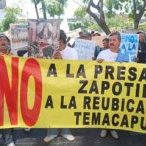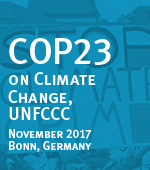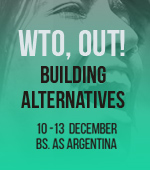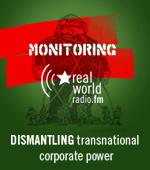
30 August 2010 | News | Climate Justice and Energy
Prisoners of "Development"
Report on the increasing amount of dams and their effects on indigenous communities
Download: MP3 (3.3 Mb)
Traditionally presented as “green” or “clean” energy projects, megadams continue to be built with the support of international financial institutions and governments of emerging powers, affecting hundreds of communities around the world.
The most recent report by Survival International on dams and their irreversible impacts shows that the promotion of hydroelectric projects does not take into account their consequences or the “lessons learned” in terms of consultation of communities. “Enthusiasm for large dams is resurfacing,
driven by the international dam lobby which is working hard to paint its industry as a panacea to climate change. The lessons learned last century are being ignored, and tribal peoples worldwide are again being sidelined, their rights violated, and their lands destroyed”, states the report.
The “new actors” of global economy have to be added to the traditional funders of these projects. China is currently the largest funder of dams, replacing the World Bank. “The China Three Gorges Project Corporation, builder of the controversial Three Gorges Dam which displaced more than a million people from around the Yangtze River, has been contracted to build a dam on the land of the
Penan tribe in Sarawak.” Also China´s biggest state bank, the Industrial and Commercial Bank of China, is considering funding Gibe III in Ethiopia, for instance. The report also states that this project will be Africa´s tallest dam and will destroy the livelihood of at least eight indigenous peoples.
China accounts for about half of they hydroelectric dams around the world, all of them financed by the government. These dams are the drivers of the rapid “development” that has put the Chinese economy in second place at world level, replacing Japan.
The World Bank has reverted from freezing several projects, and nowadays, its portfolio for hydropower and dam projects totals 11 billion dollars. Other governments claim that they no longer need loans from big international banks. Brazil, for instance, says it will build the controversial Belo Monte Dam, which would be the third world´s largest dam- with funding from the Brazilian State development bank (BNDES)and some form the private sector.
The report by Survival also states that “creating a dam’s reservoir involves flooding land, potentially submerging crops, forests, houses, and forcing entire communities to be relocated”, giving way also to the propagation of diseases. In addition, although “it is not uncommon to build a series of dams
along a single river system, to maximize electricity production”, “cumulative impact assessments are not always carried out before construction begins”.
Although most projects claim to consult affected populations, previous dialogues between investors, the government and the affected peoples are nothing more than a symbolic exercise rather than true dialogue, states Survival International.
“Basic hindrances, including language barriers or a failure to recognize a tribe’s particular needs and values, tend to result in a token exercise rather than genuine dialogue.”
The global trade of carbon credits and the concern over Climate Change have become an efficient space for the building of more hydroelectric dams. In fact, institutions such as the World Bank and the European Investment Bank are supporting the “green” credentials of hydropower, “stepping up investment in hydroelectric dams this century and littering project proposals with the dams’ ‘sustainable’ credentials.”
“The UN’s Clean Development Mechanism (CDM) allows countries to earn ‘carbon credits’ by creating emission reduction or sequestration projects”, reads the report. Countries with lower greenhouse gas emissions can therefore attract investment in ‘green’ development projects, while high-emission countries can purchase the credits generated through the projects to ‘offset’ their own excessive emissions.
Rivers for life
In October, in Jalisco, Mexico, these issues and the voice of the affected people will be heard at the international meeting “Rivers for Life 3”. The people of Temacapulin, where the event will take place, are involved in a campaign to stop El Zapotillo dam and are welcoming the members of the international movements of dam in their town and homes for this important event.
Over 300 people affected by dams, representatives of civil organizations and experts from around the world will meet to share experiences and information, develop common strategies and strengthen the international movement to protect rivers and human rights.
The event will be covered by Real World Radio.
Photo: www.riosparalavida3.org







